On the day that the town of
Carteret, New Jersey gave the key of the city to their favorite sons
– the rock band The Smithereens, whose guitarist, drummer and
original bassist all grew up in the town – the group was relaxing
behind the stage of the town’s band stand, where the Smithereens
were doing a 30th Anniversary show. It was a big deal for the
town, which held a carnival and fireworks show to celebrate
Smithereens Day.
Lead singer and songwriter Pat
DiNizio, the only original band member who was not born in
the town (he is from nearby Scotch Plains) took the hubbub with a
certain amount of bemusement.
“I don’t think about these
things. I stopped thinking about my age a long time ago and I just
focus on singing to the best of my ability and entertaining folks to
the best I know how. But I’m certainly honored that the town
thought enough of us to create this event for us and we’re going to
give it all that we’ve got. It’s a great honor. I’ve never been
given the keys to anything,” DiNizio laughs.
It seems hard to believe that The
Smithereens – who were responsible of some of the most tuneful and
crunching alt rock of the 80s – have indeed been together for 30
years. Part of that is due to the fact that their breakthrough solo
album Especially for You – which featured the classic hits
“Blood and Roses” and “Behind the Wall of Sleep” – was released in
1986. (The band had previously released two EPs, Girls About
Town and Beauty and Sadness.)
However, it was all a part of the
band’s genesis, DiNizio realizes, as he has a nearly encyclopedic
memory of the band’s history. He knew how much time and effort goes
into becoming an overnight success.
“I don’t think [the fans] are
aware of it,” DiNizio acknowledged. “I think they get the sense
that a band just comes out of nowhere. You get together and six
months later you have a record deal and you’re on the radio. They
don’t really know what goes into it. You can’t expect them to. In
retrospect, looking back at the release of the first album, ‘Blood
and Roses’ became a hit within the course of a month or two when it
was originally released around April of 1986. It continued to
grow. It could have been May of 86, I’m not sure, but I know the
first tour date in support of Especially for You was July 4
of ’86 – opening for ZZ Top in Williamsburg, Virginia. Then we took
the train to Connecticut to play with them the next night in New
Haven. Then we went out with the Ramones. We started in a good
place with the touring. We toured all summer, relentlessly. It
wasn’t until, I would say, the middle of September that year that we
achieve a career first – our very first sold-out show. That was the
Roxy in Hollywood. You come out with an album and you’ve had no
success whatsoever for the better part of five or six years. All of
the sudden it’s a hit. And people just think, ‘well, yeah, they’re
new…’”
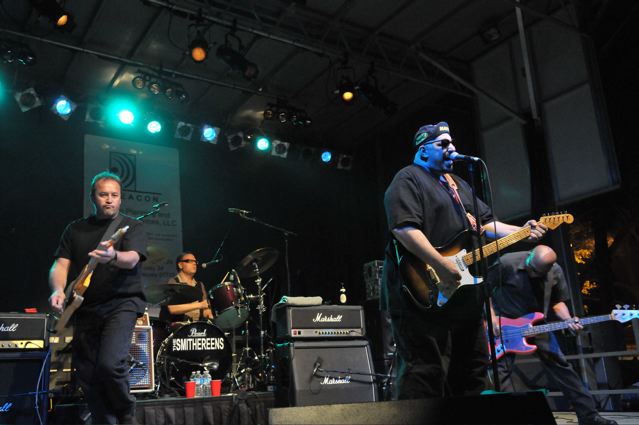 In
fact, not long before the independent release of the Girls About
Town EP, the idea of being a musician was the furthest thing
from his mind.
In
fact, not long before the independent release of the Girls About
Town EP, the idea of being a musician was the furthest thing
from his mind.
“I was perfectly content at age
eighteen to be a partner in the family business, which was picking
up garbage in New Jersey,” DiNizio recalls. “It was called N.A.
DiNizio & Sons Disposal. I just wanted to marry my high school
sweetheart and live in a small house and have a job. I had no real
aspirations.”
However aspiration was just around
the corner and it took a common form – the love of music and the
realization during the late 70s punk/new wave scene that perhaps he could create his own. After all, he had been
in bands as a kid – he joined his first band just shy of his sixth
birthday. At the time he was doing covers of current bands like The
Ventures, The Four Seasons, Jan & Dean and the Beach Boys. Then
he learned about the new wave of singer/songwriters and his path
became clear.
“Around 1977 I heard an album by
Graham Parker called Heat Treatment and I heard the first
Elvis Costello album [My Aim Is True] and I heard the Talking
Heads and I heard all the new wave bands. Then from there I
discovered Buddy Holly and it was all over for me. I lost interest
in garbage and rekindled my lifelong interest in rock & roll and the
guitar.”
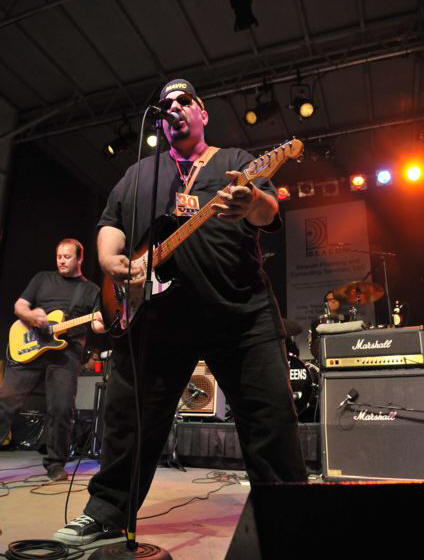 DiNizio
put an ad in the old East Coast Rocker newspaper (also known
as The Aquarian Weekly) looking for musicians who shared his
musical tastes and passions. That ad attracted three players from
Carteret: drummer Dennis Diken, guitarist Jim Babjak and bassist
Mike Mesaros.
DiNizio
put an ad in the old East Coast Rocker newspaper (also known
as The Aquarian Weekly) looking for musicians who shared his
musical tastes and passions. That ad attracted three players from
Carteret: drummer Dennis Diken, guitarist Jim Babjak and bassist
Mike Mesaros.
And the rest was history, as they
say. The core of the Smithereens stayed together for 25 years, at
which point Mesaros decided to retire. He was replaced by Severo
(The Thrilla from Manila) Jornacion.
So how does a band make it
together for all those years with so few line-up changes? What does
it take to stick together throughout it all?
“Well, it’s pretty much the same:
Mutual respect,” DiNizio says. “We know and respect each others’
boundaries. Don’t forget, we survived doing fifteen-month long bus
tours, where we were living in close proximity. Sharing the
rarified air of the tour bus – where you could never get away from
one another – for us to be able to do that nonstop for ten years, if
we could get through that, we could get through anything. Some
people can only do one thing for a certain period of time. For Mike
to do the band for 25 years was an amazing feat. Most people put
twenty years into a job and retire. Mike put 25 years into the
band, creating some of the most memorable rock & roll basslines
ever. It was his time to step down. He didn’t want to do it
anymore. He wanted to focus on raising his children. And, you
know, you can’t argue with that.
“So, fortunately for us, we had a
dear friend, who was one of the most versatile and talented
musicians that we knew, who was able to step in. When the Thrilla
from Manila stepped in it was a blessing. Initially some of the
fans were missing Mike, buy Mike’s been gone a long time now. The
Thrilla is such a perfect fit that frankly – and no offense to Mike
– the audience doesn’t really miss him anymore. It’s like, make a
choice – continue to see the band with three of the four original
members or not. It’s your choice.”
America has chosen to continue to
listen to the Smithereens, any way we can get them. To this day
some of the band’s biggest hits are staples of rock radio – even
ones that weren’t huge chart hits at the time. “Blood and Roses” in
particular has become a rock and roll staple – showing up on
sporting events, in movies, on TV, even occasionally in advertising
– though DiNizio has been careful to limit that. Other ‘Reens
classics like “Behind the Wall of Sleep,” “Only a Memory” and “A
Girl Like You” have also seeped into the country’s pop culture
subconscious.
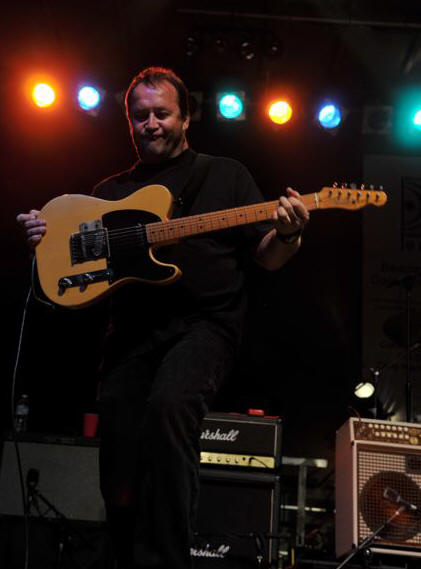 “It’s
tremendously gratifying,” DiNizio says. “I’m also very happy that
the use of these songs in films – and even the very minimal use of
them in commercials – has not destroyed the songs. It’s sort of
enhanced them. Given them a new life, but it hasn’t destroyed
them. I always felt badly for the Romantics because they licensed
‘What I Like About You’ to Budweiser. It must be extremely
difficult for them to go out and do that song live, with the
audience associating that particular song with a product. That kind
of brands it. I’m not judging anyone for doing anything. More
power to anyone that can make a buck in a business that is
definitely imploding.”
“It’s
tremendously gratifying,” DiNizio says. “I’m also very happy that
the use of these songs in films – and even the very minimal use of
them in commercials – has not destroyed the songs. It’s sort of
enhanced them. Given them a new life, but it hasn’t destroyed
them. I always felt badly for the Romantics because they licensed
‘What I Like About You’ to Budweiser. It must be extremely
difficult for them to go out and do that song live, with the
audience associating that particular song with a product. That kind
of brands it. I’m not judging anyone for doing anything. More
power to anyone that can make a buck in a business that is
definitely imploding.”
Of course, songs like “Blood and
Roses” may have been even bigger at the time, but the first album
came out on the indie Enigma label – which was a very well-respected
imprint but going through financial problems which shuttered the
label soon after the release of the Smithereen’s second album
Green Thoughts. In fact, the label would not agree to fund a
music video for the song – which was a necessary part of music
promotion in the mid-80s during the height of MTV-mania.
Eventually, the song was licensed to be in a small, long-forgotten
film called Dangerously Close and the film company made a
video for the single.
“Enigma was the only choice for us
[to start],” DiNizio recalls. “We were together over five years. I
was already producing and mixing records for bands. I was writing
press releases for Columbia Records. I was promoting concert events
around town. I never dared discuss it with anyone or entertain the
notion publicly, but in my mind I was perhaps already starting to
make other plans. Five years is a long time to be in a band that
couldn’t get a record deal and couldn’t find good venues to play.
There were bands that would form and three months later they’d be on
a major record label. It was tremendously daunting. What happened
was Enigma signed us for something like $6,000.00 and they took all
of our publishing. They committed a contractual blunder that
enabled us to leave that label and move over to Capitol with the
Green Thoughts album. Enigma was distributed by Capitol, they
had a relationship and Capitol wanted us – so we were able to move
smoothly and effortlessly from Enigma to Capitol. Enigma received
an override and they got to put the logo on the Green Thoughts
album, but that was really a Capitol release.
“Capitol at that time was
perceived as a major, but it was just a very big indie label, with
EMI as a parent company. There were problems with that, even though
‘Only a Memory’ was a #1 single and Green Thoughts eventually
went gold. 11 was a platinum album. I think Especially
for You went platinum, eventually. There were problems. Enigma
did very well the year that our album came out. They released an
album by Poison. They had something to do with that, Motley Crue,
Stryper. So Enigma was happening. What really went down was they
sold 51% of the company to EMI and then sort of let the label go.
They expanded too quickly, but those guys all ended up buying
islands in Hawaii or the South Seas, so they did very well,
indeed.”
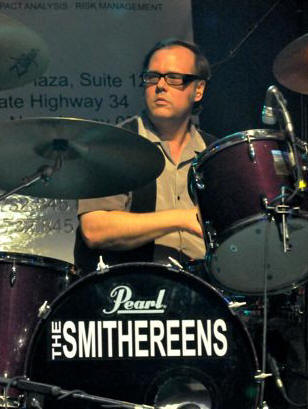 However,
DiNizio and the guys were now in the big leagues, because even if
Capitol Records was a very big indie label, the distinctive
record-stack shaped home of the imprint in Hollywood had been the home
of many of the band’s largest influences.
However,
DiNizio and the guys were now in the big leagues, because even if
Capitol Records was a very big indie label, the distinctive
record-stack shaped home of the imprint in Hollywood had been the home
of many of the band’s largest influences.
“That was our dream come
true,” DiNizio muses, “that we were on the same label as our heroes
the Beatles and certainly to a lesser extent the Beach Boys and
Frank Sinatra and Stan Kent. Capitol was our favorite label. In
fact, when our first vinyl release on Capitol Green Thoughts
came out, we insisted on that old Beatles black rainbow label – the
border with the kind of rainbow swirl. The same label we used to
look at when we listened to Meet the Beatles. It was the
same label on that album. They weren’t using that label at the time
Green Thoughts came out. We had to ask them as a favor to us
to use the traditional Capitol Beatles label.”
The change to Capitol wasn’t the
only seismic shift in the band’s terrain at the time. After the
Green Thoughts album, the band changed producers from alt-rock
favorite Don Dixon (R.E.M., Marshall Crenshaw, Matthew Sweet) to the
more commercially-vibed Ed Stasium (Talking Heads, Ramones, Living
Colour). This led to their biggest album Smithereens 11 (a
reference to the old Frank Sinatra movie Ocean’s 11) and
their first top 40 song on the Billboard pop charts, “A Girl
Like You” – which was originally written for possible inclusion in
the Cameron Crowe film … Say Anything. The next Smithereens
album, Blow Up (also named after a film, this time
Michelangelo Antonioni’s 60s art-house hit Blowup with
Vanessa Redgrave) returned the band to the top 40 with “Too Much
Passion,” a Motown pastiche that strangely became the band’s highest
peaking single, despite the fact that it is not nearly as
well-remembered as several of the band’s other songs.
It was all a bit of a blur to
DiNizio, a never-ending merry-go-round of recording, touring and
promotion. Yet he didn’t really get the chance to enjoy the perks
of rock stardom.
“It was surreal in the sense that
we went from making no money at all to having a considerable amount
of money in our collective pockets,” DiNizio recalls, “selling out
shows coast to coast when we had barely been able to draw 40 people
to a show in New York. All of the sudden, everybody wanted to know
you and people formed their own impressions of you based on the
music, before they met you.
 “But,
for me, it was non-stop hard work, 24/7,” he continues. “Whether it
was being on the bus 15 months at a time for a tour and then the
minute the tour ended, I would step off the bus, I’d go home and I’d
immediately have to lock myself in a room and have to start writing
the next album so that we’d stay on schedule. I can remember living
in a constant state of panic, you know? I had non-stop
responsibility, because we went from being unsuccessful to being
highly successful. With that success came a great deal of
responsibility. All of the sudden, the livelihood of everyone else
in the band and everyone in the organization was contingent upon my
abilities as the sole songwriter in the band to consistently come up
with new material that was melodic and commercial enough to be
played on the radio.
“But,
for me, it was non-stop hard work, 24/7,” he continues. “Whether it
was being on the bus 15 months at a time for a tour and then the
minute the tour ended, I would step off the bus, I’d go home and I’d
immediately have to lock myself in a room and have to start writing
the next album so that we’d stay on schedule. I can remember living
in a constant state of panic, you know? I had non-stop
responsibility, because we went from being unsuccessful to being
highly successful. With that success came a great deal of
responsibility. All of the sudden, the livelihood of everyone else
in the band and everyone in the organization was contingent upon my
abilities as the sole songwriter in the band to consistently come up
with new material that was melodic and commercial enough to be
played on the radio.
“The odds against success were
tremendous – but we went from strength to strength to strength,
without any failure whatsoever, for the better part of ten years.
That was a very long time to be able to do that and maintain it.
Thanks to all of that early success and the equity and the good will
that was put out there during the touring, we’re still able to go
out. All the shows sell out. We still do well. We’re very
lucky.”
Ironically, one of the band’s
biggest fans in that period would inadvertently cause a sea change
in rock and roll that would make the Smithereens’ melodic and
commercially driven music seem obsolete.
In Washington state a young
singer-songwriter and future cultural icon named Kurt Cobain was
working on his breakthrough album, Nevermind. It seems that
Cobain was a huge fan of the Smithereens. In fact, the band members
of Nirvana
were such big fans that they originally wanted to work with the
Smithereens’
original producer.
“I was told by Don Dixon that they
were approached by Nirvana first to produce Nevermind, but he
wasn’t crazy about the band and he turned them down.”
They didn’t get Dixon, but Nirvana
still listened to the Smithereens’ music nearly constantly while
recording the seminal album – one that eventually changed the
direction of rock music like few others in history.
“I got that information from the
horse’s mouth, as it were, because we recorded a Christmas single
with Butch Vig [producer of Nevermind] while Kurt was still
alive,” DiNizio confirms. “Butch told us that they would listen to
Smithereens 11 and Green Thoughts and all of our
records in the studio while they were making Nevermind,
trying to be inspired in a sense, or perhaps borrow some production
ideas and get in the mood to make the record.
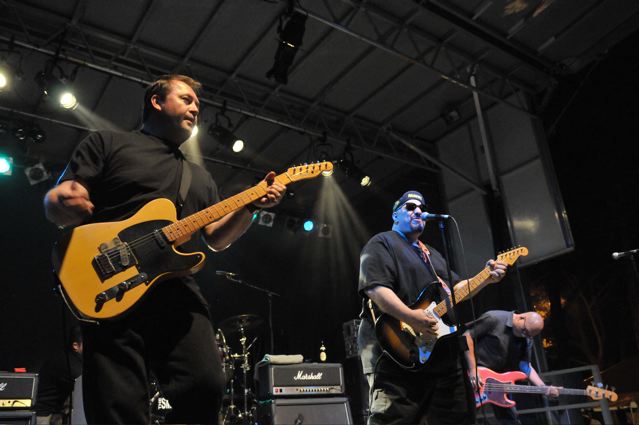 “Then I ran into Nirvana’s bass
player [Krist Novoselic] years later and he told me that they had a
tape from Enigma – someone had made a tape and on one side of the
cassette was Especially for You and the other side was a band
called Celtic Frost, who were a heavy band. They were listening to
this heavy melodic band, The Smithereens, and then this heavy rock
band called Celtic Frost and I guess they combined the elements of
the two. So they went for the Smithereens’ producer, they were
listening to our records in the studio. All the kids today buy the
Cobain notebooks and you can see right there in the top ten albums
is Especially for You. I was told by people that were close
to him that I was an influence on his writing.”
“Then I ran into Nirvana’s bass
player [Krist Novoselic] years later and he told me that they had a
tape from Enigma – someone had made a tape and on one side of the
cassette was Especially for You and the other side was a band
called Celtic Frost, who were a heavy band. They were listening to
this heavy melodic band, The Smithereens, and then this heavy rock
band called Celtic Frost and I guess they combined the elements of
the two. So they went for the Smithereens’ producer, they were
listening to our records in the studio. All the kids today buy the
Cobain notebooks and you can see right there in the top ten albums
is Especially for You. I was told by people that were close
to him that I was an influence on his writing.”
Of course being an influence
musically can be something of a double-edged sword – an experience
that DiNizio has learned the hard way several times over the years.
For example there is the slippery slope, when does tribute cross the
line over into theft? As a songwriter who has often worn his
influences on his sleeve, DiNizio has always been conscious of that
dividing line. Therefore, no matter how flattering it is to be
idolized by a cultural icon, DiNizio did notice one of Cobain’s
classic songs did sound a tiny bit familiar. And Nirvana wasn’t the
only respected band that has “borrowed” inspiration from DiNizio.
“The song ‘About a Girl,’ I think
it’s sort of a rewrite of ‘Blood and Roses,’ except the E is a major
and not a minor,” DiNizio says. “If you listen to it, you can hear
it. That’s happening all the time. The newly reformed Alice in
Chains, they have a song called ‘It’s Your Decision’ and it’s a hit
– and it is ‘Blood and Roses.’” He sings them together,
“‘It’s your decision…’ ‘Blood and roses…’ Obviously the language
is there for everyone to share, but it’s a little too close for
comfort. Also, a song by Oasis called ‘Supersonic.’ Give that one
a listen. It’s nice, it’s flattering, but sometimes it crosses over
into that gray area of plagiarism.”
However, when Nirvana exploded,
suddenly the Smithereens’ shiny pop rock felt out of place during
the new grunge era, which treasured punk rock rawness over assured
slick melodies.
DiNizio laughs, “You don’t have to
tread lightly. It definitely hurt us. It nearly destroyed our
career. Bands that we were instrumental in spawning – kids that
grew up listening to our records and being influenced by us – all
the sudden virtually eclipsed us overnight. Almost put us out of
business. But, the fact of it is, and it’s the hard truth, most of
those bands, 99% of them are gone. Many of them are dead, including
Cobain. We’re still here.”
 And the music is still there too.
After the grunge explosion and the later nu-metal corps of the late
90s, it has finally become okay for a band to have a melody again.
However, DiNizio is a bit disheartened by the current musical
climate, which he feels is sadly rather tepid.
And the music is still there too.
After the grunge explosion and the later nu-metal corps of the late
90s, it has finally become okay for a band to have a melody again.
However, DiNizio is a bit disheartened by the current musical
climate, which he feels is sadly rather tepid.
“I’m hearing songs that approach
being melodic, but it sounds like they heard a Carole King record
for the first time,” DiNizio says. “They heard Tapestry,
filtered through the lens of 40 years. They’re that far removed
from the source. Like, John Mayer is an okay guitar player. He
does a lot of different things well, but I can’t say that I’m a huge
fan of his. I respect what anyone does if they put a certain amount
of work into it. But he is like a Xerox of a Xerox of a snapshot of
a Polaroid of a photo taken at a Cream concert in 1967, at the
Fillmore East. That’s how far removed he is from the original
source. Whereas, Clapton was standing in the audience at the
Marquee Club, watching Freddie King and Howlin’ Wolf and Muddy
Waters and everyone else that he admired. He was standing there
watching these men play guitars ten feet away. You following what I
mean?
“I was closer to the source. I
was there on the Led Zeppelin III concert, on the Jethro Tull
Aqualung concert, on the Black Sabbath Master of Reality
concert. I saw Wings. Wings was a phenomenal band. So, I was
a little closer to the source. Consequently it’s less watered
down. You’re asking me about songwriting, about the quality of the
songwriting, unfortunately my thought on it is most of these people
writing so-called melodic songs wouldn’t recognize a hook if
it bit them.”
Of course, as said before, the
Smithereens had their share of influences as well. In fact early in
their career, they toured as the backing band of legendary
songwriter Otis Blackwell (“All Shook Up,” “Great Balls of Fire”
“Don’t Be Cruel”). They also backed a reunion of popular 60s pop
band The Beau Brummels (“Laugh Laugh,” “Just a Little”) – who had
smartly originally chosen their name because they wanted to be the
band right behind the Beatles on record racks. Over the years he
has worked with many other rock luminaries.
“This stuff doesn’t happen by
accident,” DiNizio says. “It happens because you admire an artist
or a band and you ask to be involved with something, or fate puts
you in the same room at the same time. This stuff is no accident.
For us, it’s tremendously thrilling, to have shared a stage with the
Kinks and for us to have backed up our early musical heroes The Beau
Brummels. For me to have been a soundman and mixed sound for Gene
Clark of the Byrds and T-Bone Burnett and Elvis Costello and Joan
Baez. [Working with] Otis Blackwell, Ramblin’ Jack Elliott. All
those great folk artists when I used to work at Folk City on Third
Street in New York. All the rock bands that would come in. I mixed
sound for Rick Danko and Richard Manuel from The Band. Those guys
could outplay anybody. Dave van Ronk, the mayor of Greenwich
Village. Like I said, I was closer to the source.”
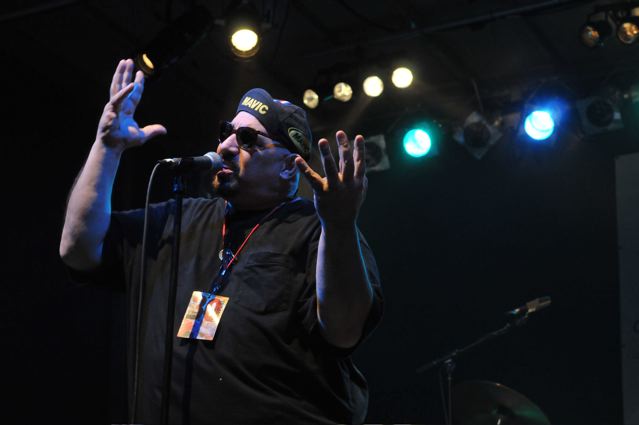 One influence that he did not get
to work with was jazz singer Astrud Gilberto (“The Girl From Ipanema,”
“How Insensitive”), despite the fact that he had written the song
“In a Lonely Place” with her in mind.
One influence that he did not get
to work with was jazz singer Astrud Gilberto (“The Girl From Ipanema,”
“How Insensitive”), despite the fact that he had written the song
“In a Lonely Place” with her in mind.
“When I approached her about it,
it was at a venue called SOB – Sounds of Brazil. I went to see her
specifically, not only because I loved her singing, the records
she’d made, but I knew she was perfect for this. And, you know,
some strange kid walked up to her and asked her to sing on an
album. She said, ‘Call my manager.’ She could have been sincere
about wanting to do it – of course for a price, probably. For a
fee. I just got the feeling I was barking up the wrong tree and it
might have also been a case of ‘worship your heroes from afar, as
nearness tarnishes them.’”
Therefore he decided to record the
song with Suzanne Vega, who at the time was flying high from her own
well-respected debut album – and was preparing Solitude Standing,
the album that would make her a household name with the hits “Luka”
and “Tom’s Diner.”
“I knew Suzanne,” DiNizio says.
“We’d worked together at an office. How extraordinary is that?
That both of us got record deals and became successful.”
DiNizio has
since worked with many
other singers – Belinda Carlisle and Marti Jones are just a couple
he has recorded with – and anytime he gets to play with fellow
musicians it is fun.
“Anytime you’re able to do
something with one of your musical heroes and it’s a pleasant
experience – it’s the sort of thing that gets you through your
life. It’s a very wonderful memory. Somewhere on YouTube, there is
a video circulating of a Buddy Holly party that
[Paul] McCartney threw at
the Lone Star Road House in New York in 1990 – September 4, I
believe it was – and I’m on stage with him, playing bass. Come on,
it’s like you’ve died and gone to heaven.”
While the Smithereens have
continued on as a touring force (and occasionally recording) over
the years, DiNizio has branched out in lots of different
directions. In fact, he was one of the rock stars hired by
satellite radio early on to create on-air programming – a career
path which DiNizio looks back at with mixed
feelings.
 “It was a lot of fun when I was on
the air and when I got to pick and choose what I wanted to play and
to tell stories on the radio,” DiNizio says. “But it was no fun
whatsoever spending a year in the broadcast booth, not really
broadcasting but pretending. We had to rehearse for a year. It was
the most boring drudgery I’ve ever encountered. I didn’t like the
people I worked for. They were corporate people who had virtually
no appreciation for music whatsoever, who hired formerly-employed
radio people who were unemployable and had them build content and
radio stations that were superb – and then got rid of everybody and
brought in people to work for a fraction of what they were paying
the original people.
“It was a lot of fun when I was on
the air and when I got to pick and choose what I wanted to play and
to tell stories on the radio,” DiNizio says. “But it was no fun
whatsoever spending a year in the broadcast booth, not really
broadcasting but pretending. We had to rehearse for a year. It was
the most boring drudgery I’ve ever encountered. I didn’t like the
people I worked for. They were corporate people who had virtually
no appreciation for music whatsoever, who hired formerly-employed
radio people who were unemployable and had them build content and
radio stations that were superb – and then got rid of everybody and
brought in people to work for a fraction of what they were paying
the original people.
“I’m being blunt with you about
this, you can’t take a wild animal and put it in a cage and expect
it to live for long. By that analogy I’m referring to myself being
someone who is most comfortable on stage, on tour. So I did it and
it was cool to do. It was a really unique, neat opportunity. If I
ever played you air checks of recordings of what we did, I think it
was one of – if not the – best station of its kind ever done. It
was totally free form. It was remarkable. It was the only station
of its kind ever to play the greatest hits from the greatest bands
you never heard of. So, it was cool.
“But did I like working in that
environment? You’ve got to remember, the last straight job that I
had was in 1980, working at an advertising agency – in a different
world, on a different planet, far, far away, in a different galaxy.
Back in the pre-politically correct days. We can disagree on
certain things, but all I can tell you is that when I worked at that
ad agency on Times Square in 1980, everyone smoked in the office, we
went drinking together after work, people dated each other, nobody
sued each other. You had discussions about religion and politics at
the water cooler. You had respectful arguments. You actually lived
and talked and interacted with other human beings in a way that was
challenging and interesting and human.
“Now, the corporate environment
turned into something that was sterile and uncreative and daunting
and was an atmosphere of fear – that you’d say the wrong thing to
the wrong person at the wrong time. I remember a gentleman there
who ran the 80s channel who had been a cancer survivor. When we did
one of our boot camps, which was to rally the troops, we had to give
a presentation. He was a recovering drug addict, alcoholic,
formerly, who was grateful to work. He brought in some people to
work for him as his music director and one of his DJs, who also had
been in the same boat as he – these two women.
Affectionately, he goes, ‘I wouldn’t have been able to make as great
a station as I’ve created without the help of my two girls.’ [He
asked] Kim and Sue, or whatever their names were to stand up and
take a bow. The next day, he was being sued because he referred to
them as girls. Do I really want to live in a world like that?
Where you can’t say anything at all without fear of retribution or
lawsuits or your reputation being destroyed or rendering yourself
unemployable? My cousin Leonard came up from Florida. He’s twelve
or thirteen years older than me – more like a kid brother to my
mother than her nephew. We agreed that we lived – or were brought
up – in the best of times. If I died tomorrow, I would have lived a
great life. Do you understand? I certainly don’t want to live in
what I’ve seen now.”
DiNizio became so disillusioned by
things that he decided to get into politics, making a run for the
New Jersey Senate seat as an independent as part of the Reform Party
in 2000. The run was actually made into a documentary film called
Mr. Smithereen Goes to Washington. Unfortunately, his
experience in politics not only didn’t help his disillusionment, it
fostered those dark thoughts somewhat.
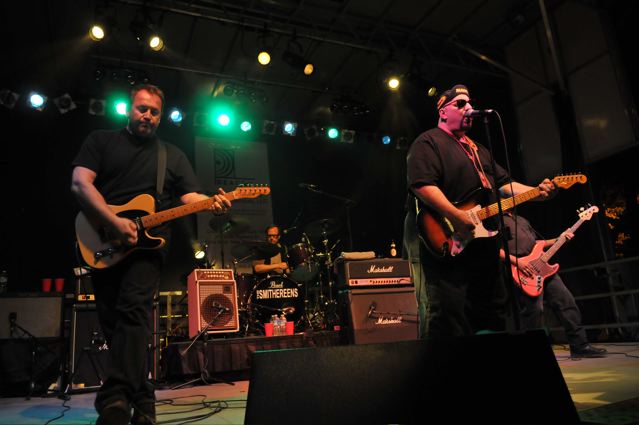 “You know what? A guy like me
will never make it in politics, because I won’t play their game,”
DiNizio concludes. “I’m incapable of doing it. I think that once
you are elected you are co-oped, you are bought, you are
blackmailed. Whatever it is that they need to do. The people that
control everything, they will do it to you so that you toe the line
and you deliver the message that they want. After running for
Senate against former Goldman Sachs president and multi-billionaire
Jon Corzine and really going through the mill – being followed,
having my phone tapped, having death threats, stuff that went on
behind the scenes – and realizing that the people didn’t want a
third party candidate who spoke the truth and who really represented
working people. They had more respect for the rich guy. It was
like I’m going to buy unseen the Sony Records project as opposed to
the SST record label, which was done in somebody’s garage in
Arizona. It was a very painful experience. It was shattering for
me. Financially, because I funded the entire thing myself. It was
very difficult to see that the people were not awake. They are
awake now. I have so many people come up to me and say, ‘I voted
for you. I loved your stand.’ Basically my stance politically is
not popular – in the music industry or in show business. But
fortunately for me, I will probably still be standing when those
industries have completely imploded and have gone away, which seems
to be happening.”
“You know what? A guy like me
will never make it in politics, because I won’t play their game,”
DiNizio concludes. “I’m incapable of doing it. I think that once
you are elected you are co-oped, you are bought, you are
blackmailed. Whatever it is that they need to do. The people that
control everything, they will do it to you so that you toe the line
and you deliver the message that they want. After running for
Senate against former Goldman Sachs president and multi-billionaire
Jon Corzine and really going through the mill – being followed,
having my phone tapped, having death threats, stuff that went on
behind the scenes – and realizing that the people didn’t want a
third party candidate who spoke the truth and who really represented
working people. They had more respect for the rich guy. It was
like I’m going to buy unseen the Sony Records project as opposed to
the SST record label, which was done in somebody’s garage in
Arizona. It was a very painful experience. It was shattering for
me. Financially, because I funded the entire thing myself. It was
very difficult to see that the people were not awake. They are
awake now. I have so many people come up to me and say, ‘I voted
for you. I loved your stand.’ Basically my stance politically is
not popular – in the music industry or in show business. But
fortunately for me, I will probably still be standing when those
industries have completely imploded and have gone away, which seems
to be happening.”
He has found a new and greatly
preferable way to get to the people. While the Smithereens have had
active touring schedules for years, DiNizio has also taken on a
revolutionary new way to perform rock shows. For years in folk
music there has been a concept known as living room shows: in which
essentially common families get together friends to bring their
favorite performers to play in their own homes. However, no
musician with a rock and roll background had done them until DiNizio
took up the idea in recent years, setting up a tour of living room
shows around the country every year. As much as he enjoys normal
touring, these shows are a return to his roots and a way to interact
with his fans and DiNizio treasures the experiences.
“I love doing these shows,”
DiNizio says. “Last year I went out on December 1st of 2008 and
came back at the end of May. I drove an average of two to three
hundred miles a day, visiting supporters and friends and fans of the
Smithereens in their homes, living rooms and back yards all across
the United States. You really have to have a genuine love for what
you are doing and an affection for people to be able to do this.
“There are a lot of funny things
that happen. I remember en route to Clear Lake, Wisconsin,
the gentleman who was sponsoring the concert said to me, ‘Pat, we’ve
got too many people now attending, so we’re not going to be able to
hold the event at the bed and breakfast. Is it okay with you if we
move the living room show to another venue?’ I said, well it’s your
show. As long as it’s appropriate and I can help you organize it,
that’ll be fine. He says, ‘Okay, we’ll move it to the funeral
home.’” DiNizio laughs, “I said, what? Are you a mortician? He
goes, ‘Oh, I do it all.’ When I got there, I pulled up to the
funeral home [and] they had my name in the display window.” He
laughs again. “I thought I was being waked that night. It
was very funny. When I stayed at the bed and breakfast it was even
more of a revelation, because – you can probably Google this or find
it online – from Clear Lake, Wisconsin, it’s a house that this
gentleman and his wife built that is a complete replica of the Andy
Taylor home from The Andy Griffith Show – even down to a
replica of the jail in the basement. They said, ‘You’re going to
love it here, we’re putting you into the Opie room.’ It was a
complete replica of Opie’s room from the show. They said, ‘Oh,
yeah, people come here just to stay in the house. They come from
all over the world and when they see the place, they cry, because
they love the show.’
“These are the kind of
experiences. I did one up in Maine, it was the first show of the
tour and it had been booked a year in advance. I arrived and the
wife of the person who had hired me to do the show said, ‘Welcome to
our town. Joe would have really like to have been here for the
show.’ I said what do you mean? She said, ‘Well, he passed away
last month. But we felt that he would have wanted us to have the
show.’ Most people didn’t even know why they were showing up for
this thing. I think that this show actually provided closure for
her. She couldn’t accept the fact that he had passed away.
Basically, I said on stage that we’re here to honor the memory and
life of Joe, who was tremendous fan of my music and thought enough
of me to book me and bring me up here to Maine. Let’s give a moment
of silence and honor [him]. I think having the show actually
brought closure. She realized that he was gone. Interesting,
right?”
The touring has been robust, but
DiNizio and his band
– after several years of no recording
–
have also
returned to the studio. In recent years they have made three
tribute albums, two of Beatles music (Meet the Smithereens,
B-Sides the Beatles) and one of the Who (The Smithereens Play
Tommy.) DiNizio himself has also done a couple of solo albums
worth of covers, This is Pat DiNizio and Pat DiNizio/Buddy Holly.
He enjoys doing the covers albums, but in the long run they are just
a means to an end.
“It’s not particularly intriguing
for me, but in terms of doing tribute
albums – I think that our albums are better than the rest of them
combined, because they are done with real love and affection and
real respect. When you do Meet the Beatles from beginning to
end, you play the notes as written, the way a classical orchestra
would play Beethoven or Mozart or Brahms. But, you inject your own
personality into it. So it’s the Smithereens’ guitar tones. It’s
my voice and my style of singing. It’s not Beatlemania.
“In the end, do they interest me?
On a certain level, yes, but mainly they were designed as a way to
reintroduce the band to the listening audience. I’m going to tell
you something. If you look at whatever’s left of the charts, the
parade of tribute albums never ends. It keeps going. And the
parade of cover records never ends. It was unheard of back in the
day that we first started making albums that you’d put out entire
albums of covers of other people’s songs. Now, the kids who are
buying records, they don’t know where these songs came from, because
they’re really removed from the source. They don’t know the songs
are 40 years old that are newly recorded.
“But, anyway, the long-winded
version of the story is the tribute albums were designed as a fun
and interesting way to document certain things that are very
important – certain records that were very important to the world
when they were originally released, all those years ago. Meet
the Beatles was significant. I bought it when it came out, when
I was a child, and I noticed the profound impact that album had on
America. Within weeks of its release, if not days, there was a
garage band on every corner or every street of every small town in
America. I was there. I saw it.”
In the last couple of decades,
DiNizio has split his recording between band albums and solo ones –
other than the two covers albums he has recorded two records of
original compositions. He tends to save his more experimental
impulses for the solo disks, things that wouldn’t fit comfortably in
the dynamic of the band.
“I’m a record collector and I’m a
student of pop music history,” DiNizio explains. “For example, in
the case of the album I did for the Fuel label, which was
distributed by Universal – it’s called This is Pat DiNizio, I
was listening to the Tony Bennett/Bill Evans album. That was on I
think the Fantasy record label. Tony had just lost his deal and he
had been with Columbia Records for 25 years and he just decided to
go back to his roots. This was released around ’74 or ’73, I
think. It’s called The Tony Bennett/Bill Evans Album. It
was just Bill Evans playing piano and Tony singing. I really loved
the record. I loved the idea of it. I loved the challenge of it,
because it’s just the naked solo human voice with one instrument.
And there were records with Ella Fitzgerald singing with Joe Pass,
the guitar player – things like that, which I thought were good, but
not as good as that Tony Bennett album. I wanted to do something
similar, which was to do standards of my generation, songs that had
become standards like ‘Homeward Bound,’ ‘Wichita Lineman,’ ‘For No
One’ by the Beatles, from Revolver. That’s what I did.
“Usually you come up with a
concept. My recently-released Buddy Holly tribute album was
done with Charlie Calello, who was one of the Four Seasons and did
all the strings and orchestral arrangements for songs like ‘The
Mouse,’ by Soupy Sales and ‘Lover’s Concerto’ by the Toys and Neil
Diamond’s ‘Sweet Caroline.’ He worked with Springsteen, I think on
‘Jungleland.’ Look up Charles Calello and you’ll see what he’s
done. He did the string arrangements on my Buddy Holly tribute
album. I wanted to honor the memory of the musical artist from whom
I got the most inspiration from – and in fact, provided the
necessary encouragement to want to be a songwriter. I felt that on
the fiftieth anniversary of his passing that someone should say
something, but I didn’t want to do a typical knock-off Buddy Holly
album, so I took a more baroque string-driven direction. On
virtually every track there is a string quartet. So, it honors his
memory, but I make the songs my own.”
It is all just an extension of
DiNizio’s love of the music and desire to produce the best work he
can.
“I always try to find something
interesting to try to make a statement in a market that is
absolutely glutted or overpopulated by people who are releasing
records – some of which are great and others which have no business
every getting out of the gate,” DiNizio says. “Just because Pro
Tools enables you to make a record for the cost of two corned beef
sandwiches, doesn’t mean that you should put it out. You’ve got
things like auto tuning, which can turn someone who absolutely
cannot sing into a pitch perfect vocalist. It’s absolutely
ludicrous. Everything has been dumbed down to the point of
insanity. In my day, American Idol was called Star Search
– and if you won Star Search, your career was dead. It was
dead in the water. People would laugh at you, because they knew
what was good and what was bad. People of my generation and people
of my father’s generation were not nearly as easily fooled as
apparently people today are. I don’t know why.”
Now, after getting his feet wet
again with the tribute albums, DiNizio realizes that he is a
songwriter and it is time for him to get back to doing his own
music.
“We’re working on a new
Smithereens album right now,” DiNizio announces. “We’ll be
recording it in Kernersville, North Carolina with Don Dixon and
Mitch Easter – from October 4th through the 9th and then Don will be
coming up to my house in Jersey in November. We’ll be doing the
vocals and guitars. Then he’ll take it home to Canton, Ohio and
we’ll have a new Smithereens album by December 1st, which will come
out in the Spring.”
The world has been waiting.
He laughs heartily. “You can’t
wait? How about me?”

Email
us Let us know what you
think.